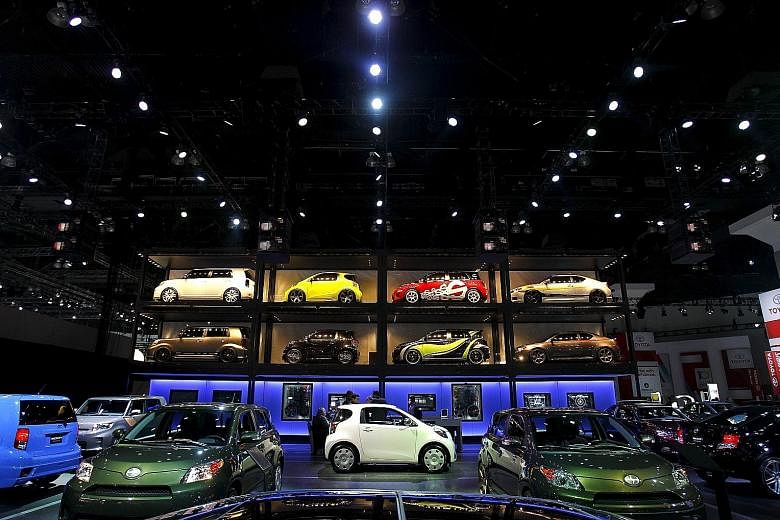NEW YORK • It was not too long ago that carmakers were tripping over themselves in pursuit of younger buyers by offering boxy wagons and small, jellybean-shape city cars. The Scion xB, the Honda Element, the Nissan Cube were funky departures for Generation X from the dowdy minivans of their parents.
But times and tastes change. When Toyota announced this month that it would mothball its youth-oriented Scion brand, it punctuated a broader retreat in the industry from quirkier car designs, particularly at the low end of the market.
Today's younger buyers, loosely referred to as Generation Y, have embraced a term that would have turned off their immediate forebears.
"Compared to Gen X, Gen Y is very mainstream," said Ms Michelle Krebs, senior analyst for Autotrader. "They see the car as a symbol of their accomplishments and aspirations. They're into very established, highly respected global brands, whereas Gen X always wanted something different from what their parents drove."
American millennials are active car shoppers. In 2014, younger buyers accounted for 27 per cent of new-car sales, according to marketing information services company J.D. Power and Associates.
But they have little taste or patience for Scion, a United States subsidiary founded by Toyota in 2003 explicitly to woo younger buyers. After reaching peak sales of 173,000 a year in 2006, the number of Scion cars sold plunged as low as 45,000 in 2010. Some of its models will survive, but under the Toyota name.
Instead, younger buyers have embraced conservatively styled crossovers and SUVs. Even once-moribund Buick is attracting millennials with its strong-selling Encore compact crossover.
Central to the Scion recipe were unconventional exterior designs ripe for personalisation. The so-called tuner culture that blossomed in the 1990s in Southern California readily adopted the cars, with their sub-US$20,000 sticker prices, idiosyncratic yet malleable styling and easily upgraded exhaust and engine-management systems.
Mr Jack Hollis, group vice- president of marketing for Toyota's US subsidiary, Toyota Motor Sales, said: "Being progressive wasn't something that came easy for Toyota 13 or 14 years ago. Scion was a laboratory for experimentation."
Mr Hollis, who previously served as vice-president of Scion, added: "We had the lowest median age buyer in the market, so the recession hit us hard."
But while other carmakers roared back, with a record 17.5 million passenger vehicles sold last year, Scion's numbers never recovered.
Mini, the emblematic British brand resurrected by the BMW Group of Germany at the dawn of the millennium, has also struggled against the preference of millennials for more staid - and bigger - cars, with US sales of the Mini relatively flat since 2012.
The asymmetrical Cube from Nissan, a vehicle whose emphatic strangeness was unrivalled in the US market, was discontinued in 2014. Production of the Honda Element, an airy four-door beloved by dog owners for its crate-ready rear load area and easily cleaned interior, was stopped in 2011.
Given the cyclical nature of the car business, unconventional designs may resonate anew with younger buyers entering the market. But for the time being, an old saying in the car industry has been flipped on its head.
"Right now, you can't really say, 'You can sell a young man's car to an old man, but you can't sell an old man's car to a young man,'" said Mr Stewart Reed, chairman of the transportation design programme at the Art Center College of Design in Pasadena, California. "It's a make-you-smile shift."
NEW YORK TIMES

